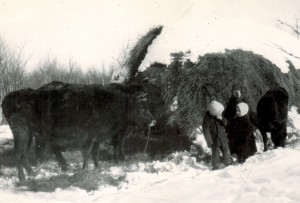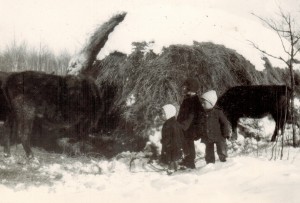 Kids have always had a fascination with animals. Any animal will do, but pets don’t seem to fall into the same category as other animals. I suppose that the reason for that is that after a little bit of time with a pet, they become normal everyday parts of the family. It doesn’t mean the child doesn’t love the pet, because they do, but the pet is an animal they see everyday, often in the house, so it’s nothing special. Farm animals, on the other hand are something different. Here is an animal that isn’t a domesticated pet, and yet it isn’t afraid of people either. They understand that they need people to bring them their food and water, and they also understand that people aren’t usually scary. Yes, the animal could hurt a child, especially if it stepped on the child, but for the most part the animal is as curious about the child as the child is about the animal.
Kids have always had a fascination with animals. Any animal will do, but pets don’t seem to fall into the same category as other animals. I suppose that the reason for that is that after a little bit of time with a pet, they become normal everyday parts of the family. It doesn’t mean the child doesn’t love the pet, because they do, but the pet is an animal they see everyday, often in the house, so it’s nothing special. Farm animals, on the other hand are something different. Here is an animal that isn’t a domesticated pet, and yet it isn’t afraid of people either. They understand that they need people to bring them their food and water, and they also understand that people aren’t usually scary. Yes, the animal could hurt a child, especially if it stepped on the child, but for the most part the animal is as curious about the child as the child is about the animal.
As small children, my dad and his siblings lived on a farm, so being around farm animals was a part of life. Still, that did not stop the curiosity about those animals from forming in their minds. When they went out to play, a part of their time outside always seemed to be spent visiting the other residents of their home. They would trek out to the haystacks where the cows would be feeding, and watch those strong, yet gentle animals eat, while the cows watched these tiny versions of the people who cared for them watching them. Funny how we all teach our kids not to stare, but when put in a situation like this, all that rudeness doesn’t seem to matter. Both sides are staring anyway, and since it isn’t a person…it just doesn’t matter. I suppose in many ways the whole situation was a lot like the petting zoos that most city children have been to as their only real interaction with farm animals.
When my girls were little, we too had a little place out in the country, and we raised a cow now and them. The girls were quite curious and really wanted to help with our cow. I had to be careful what they helped with, because when it came to grain…our cows always became pigs, and a tiny little girl could get trampled in the cows effort to get to what the cows considered candy. Most of the time the cows were a gentle as they could be, but the grain had to be given in a certain way, and very quickly, because they couldn’t wait to get to it. One cow we had named Rosie, due to her red color, was so excited that she was trying to follow me and still scratch her belly too. The end result was one good, but unintended kick to the back of my knee. It left a knot that stayed with me for the better part of 6 months. It was a good thing for Rosie that I liked her, and it wasn’t butchering time, or she would have been on our table in a matter of days.
Hay was always a very different matter. Little kids could be around cows eating hay, and there  was not a dangerous rush to the food. I suppose that was the vegetables of the whole deal, and we all know how kids, which is what cows are a lot like when it comes to food, are with vegetables. The girls loved to help put the hay in the feeding troths for the cows, and then sit and watch them eat. I suppose it was an interesting sight. If you have never watched a cow eat, you might not know it, but they really are strange when they eat. I suppose that is why Aunt Ruth, Uncle Bill, and my dad were just standing there, out by the haystack when they could have been playing in the snow, just watching the cows eat.
was not a dangerous rush to the food. I suppose that was the vegetables of the whole deal, and we all know how kids, which is what cows are a lot like when it comes to food, are with vegetables. The girls loved to help put the hay in the feeding troths for the cows, and then sit and watch them eat. I suppose it was an interesting sight. If you have never watched a cow eat, you might not know it, but they really are strange when they eat. I suppose that is why Aunt Ruth, Uncle Bill, and my dad were just standing there, out by the haystack when they could have been playing in the snow, just watching the cows eat.


Leave a Reply